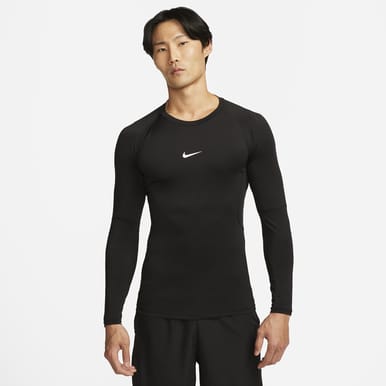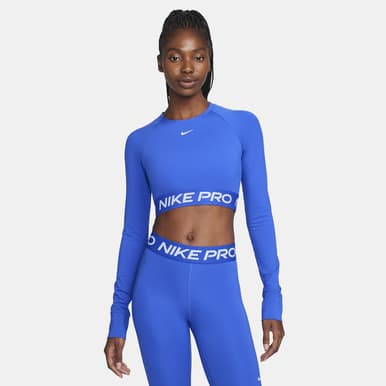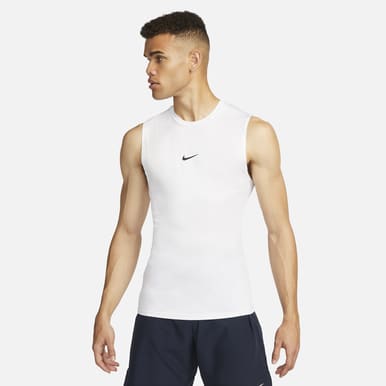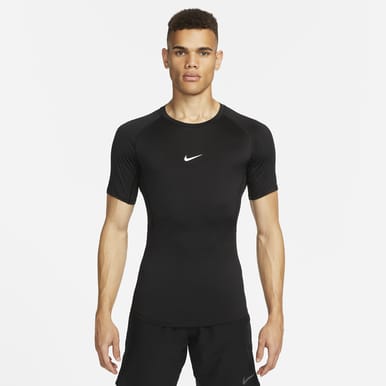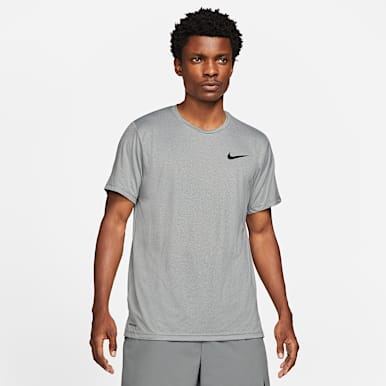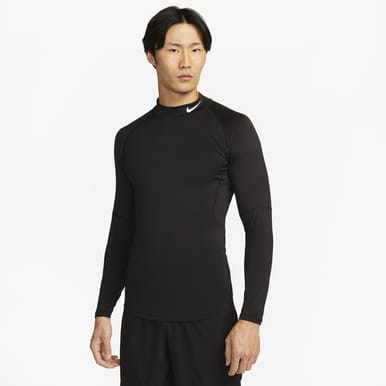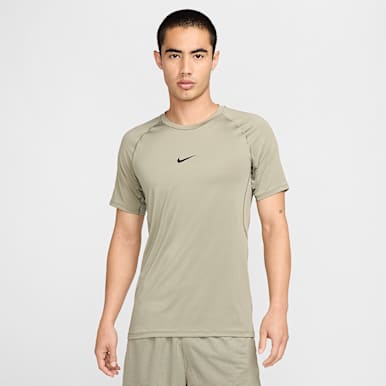What Is Moisture Wicking and How Does It Work?
Buying Guide
Do you sweat like crazy during workouts and long to stay dry? Learn how moisture-wicking fabrics can keep you cool and dry no matter how much you sweat.

Once you've felt how much more comfortable a moisture-wicking top can be during your sweaty workouts, there's no going back to a basic cotton T-shirt.
But how is it that a top can keep you so dry and cool, when you know you're sweating like crazy? The secret lies in a fabric that's moisture wicking.
Once you uncover the science behind your moisture-wicking top, you'll understand which fabrics are best for keeping sweat under control. Here's how to pick a moisture-wicking fabric.
How Moisture-Wicking Tops Work
During exercise, sweat gets drawn away from your skin and onto the fibres of your T-shirt. If your tee is made from a natural fabric like cotton, the moisture is absorbed into the fibres. This makes the T-shirt feel damp and heavy.
Moisture-wicking fabrics such as polyester take advantage of a process known as "capillary action". The fibres keep the sweat on the surface, acting like channels to transport the sweat to the outer layer of your top. Once there, the sweat evaporates in the air. "This leaves you with a sweat-free and perfectly dry finish", says Christine Wang, founder of TheSkiGirl.com.
Over the years, clothing companies have made moisture-wicking tops even more effective for both men and women by slimming down the fibres. "The finer the diameter, the more individual fibres you can get in one yarn, which means more tiny channels that sweat can run along", says Janet Brady, associate professor of materials technology at Thomas Jefferson University. The result: The fibres wick wetness away and you get a drier, cooler you.
Some T-shirts have a hydrophilic (water-loving) finish applied to the skin side of the fabric. The finish will wick the moisture away from the skin extra-quickly and transport it to the moisture-wicking fibres so they can do the rest of the work, Brady says.
Shop the complete collection of Nike Dri-FIT tops.
The Best Moisture-Wicking Top Materials For Your Workout
Some fabrics do a better job of wicking sweat than others. What's more, the ideal moisture-wicking T-shirt may depend on the workout you have planned.
Here's the lowdown of the best moisture-wicking T-shirt materials, whether you prefer a short-sleeve or long-sleeve tee. Plus, when to wear them.
- Polyester: This synthetic material is a go-to for moisture-wicking tops. And for good reason: It's durable, lightweight and breathable, notes Amie Dworecki, CEO and head coach of Running with Life. Polyester (or polyester blended with nylon or elastane) is a safe choice for a wide variety of workouts and environments. In fact, polyester is the foundation of the moisture-wicking Nike Dri-FIT clothing line.
- Polypropylene: Polypropylene is another top moisture-wicker for men and women. It's lightweight, yet it offers thermal properties, making it a great choice for cold-weather gear, Wang of TheSkiGirl.com says.
- Nylon: Nylon is a breathable synthetic material that gives well for a comfortable fit, Dworecki says. These qualities make it another common pick for moisture-wicking tops. Like polyester, nylon (or nylon blended with other sweat-wicking materials) is great for most workouts.
- Merino wool: Wool is unique. It absorbs the highest percentage of moisture for its weight, according to Brady. And yet, the wool won't feel damp on your skin when you sweat. The explanation lies in the shape of the fibres. While other fabrics have smooth fibres that lie flat against your skin, wool fibres are naturally crimped. This crimping creates space between the fabric and your skin, which cuts back on that damp, heavy sensation you often feel from other natural fabrics, according to Brady.
Combine the wool fibre's shape with its warming abilities, and you've got a great material for workouts, especially cold-weather ones. Merino wool is an especially good choice as its fibres are thinner than traditional wool. Clothing and apparel made from Merino wool will be lighter than those made from other types of wool. A range of Merino wool workout clothing is available for both men and women.
Fabrics to Avoid During Your Workout
If you want to keep cool and dry during your workout, be wary of a tee that lists cotton, silk or linen on the label. "They can keep you cool, sure, but they're not moisture-wicking", Wang says. Instead, these fabrics absorb moisture, which only creates a sweaty, sticky mess, she adds.
Cotton is an especially bad option for a T-shirt or workout gear, as it can absorb up to 7 percent of its own weight in sweat, according to Dworecki. All that dampness held close to your body is not only uncomfortable, but it can also make it harder to cool yourself when you're exercising in the heat. And on cool, rainy days, that dampness can make you even colder, Dworecki notes. In either instance, wearing a sweat-soaked cotton T-shirt doesn't feel great. Instead choose a fabric that will wick moisture away from your skin.
How to Care For Your Moisture-Wicking Tops
Short sleeve or long sleeve, most moisture-wicking T-shirts are easy to clean. Still, it's worth giving the care label a read in case there are any specific instructions. "The care label in the garment is there to help the consumer maintain the performance of the product they purchased, so taking a note of it is good", Brady says.
Always check the label for exact care instructions. However, here are some general washing recommendations to bear in mind:
- Machine wash inside out in cold water with similar colours.
- Use powdered detergent.
- Don't wring out excess water.
- Air dry or tumble dry on low heat (high heat can reduce the performance of Nike Dri-FIT clothes).
- Don't use bleach, dryer sheets or fabric softener.
- Don't dry clean.
- If needed, iron on a cool setting to avoid damaging logos or designs.
